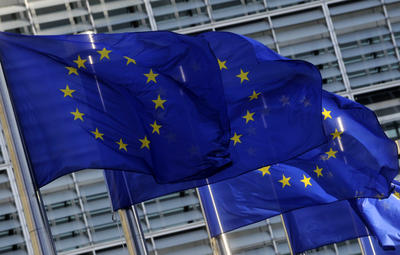This lessening of competition favours the most powerful rent-seekers, and is a sure recipe for increased inequality and political turmoil.
Against this backdrop, the EU’s current macroeconomic and budgetary policies are not politically sustainable. One solution to the EU’s predicament is further trade liberalisation, which could buttress domestic reforms and boost growth. In the absence of an increasingly unlikely Doha deal, steps toward greater trade liberalisation will rely on preferential trade agreements (PTAs).
This raises two questions for the EU: first, which PTAs are most likely to provide the biggest and fastest boost to its growth, and, second, which PTAs will best insure EU member states against the discriminatory effects of the PTAs concluded among large, non-EU economies? The latter is a key question because PTAs, by definition, favour trade between signatories to the detriment of trade between signatories and the rest of the world.
The first question focuses on the ‘growth’ dimension of trade policy. PTAs will only be able to boost domestic growth if the economies of the EU’s PTA partners fulfil three conditions. They should be big enough to generate economies of scale and scope capable of having a substantial impact on the EU’s relative prices — important because changes in relative prices are the source of welfare gains. They should also be well regulated because modern economies are dominated by services, the efficiency of which depend largely on the quality of the regulatory schemes in place. Finally, they should have a wide network of good-quality PTAs, capable of offering EU firms better opportunities to access the economies already covered by those PTAs (the ‘hub’ quality).
Apart from the US, Japan and Taiwan are the only economies in the world that meet these three conditions (the EU already has an FTA with South Korea). Although China, and to a much lesser extent India, offer better growth opportunities in the long run when it comes to size, they score poorly on regulatory quality, ranking 92 and 132 respectively in the 2012 Doing Business report. By contrast, Japan and Taiwan are ranked 20 and 25 in the same report (better than many EU Member States). Additionally, when it comes to the ‘hub’ criterion, Japan has PTAs with ASEAN countries, while Taiwan has a key PTA in place with China. The capacity of Japan and Taiwan to meet all three conditions indicates the need for a resolute EU pivot to East Asia.
The second question focuses on the ‘insurance’ dimension, which is important given the emergence of non-EU ‘mega’ PTAs around the world, such as the US-led Trans-Pacific Partnership (TPP) and the China–Japan–Korea initiative. Remarkably, factoring in the insurance dimension still leads to the same set of preferable PTAs for the EU: a PTA with Japan will insure EU firms against the potential discriminatory impacts of the TPP, while a PTA with Taiwan will do the same with respect to the China–Japan–Korea initiative.
Finally, the EU should ask itself how it will balance any pivot to East Asia with the PTA negotiations that it already has underway. This is important when it comes to creating an order of priority for negotiations, all of which will inevitably consume a huge amount of time, staff and funds.
Regarding the US, the EU should bear in mind that despite fitting the three conditions related to the first ‘growth’ dimension of trade policy, any negotiations on an EU–US PTA are likely to be difficult. This is mostly because the US insists on harmonisation and/or convergence with US regulations in its TPP negotiations (as the EU was systematically doing a few years ago). This is inconsistent with the EU’s current approach, which increasingly insists on unconditional mutual recognition, as it does internally among member states.
The cases of South Korea and China are quite different. They raise the problem of time consistency, since PTAs are negotiated one after the other. In both cases, the EU, Japan and Taiwan should eliminate possible negative spillover effects on any earlier negotiated trade agreements with South Korea and China.
Finally, Brazil and India raise the issue of what to do with negotiations that are currently going nowhere. In both instances, the EU should consider abandoning the too-ambitious goal of gaining full-fledged PTAs for the time being. It should instead focus on narrower topics with higher chances of success, such as building norms on some key farm and manufacturing goods, and regulations in services of prime interest to both sides.
None of these major trading partners has as much to offer the EU through a PTA as Japan and Taiwan. To improve its domestic growth prospects, the EU should pivot to East Asia by concluding ambitious PTAs with both economies.
Patrick A. Messerlin is Chairman of the ECIPE Steering Committee and a Visiting Professor at Seoul National University, South Korea.

